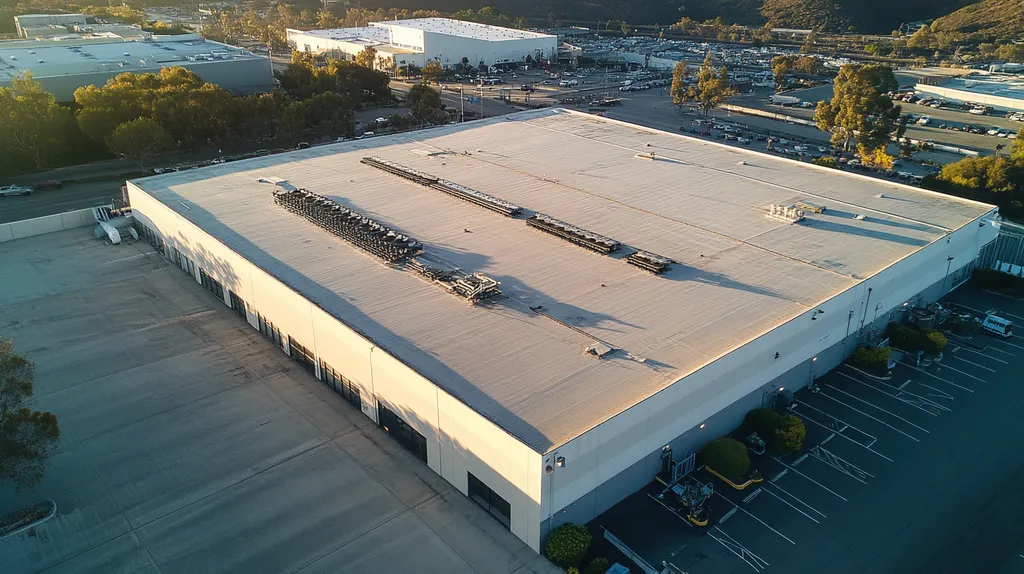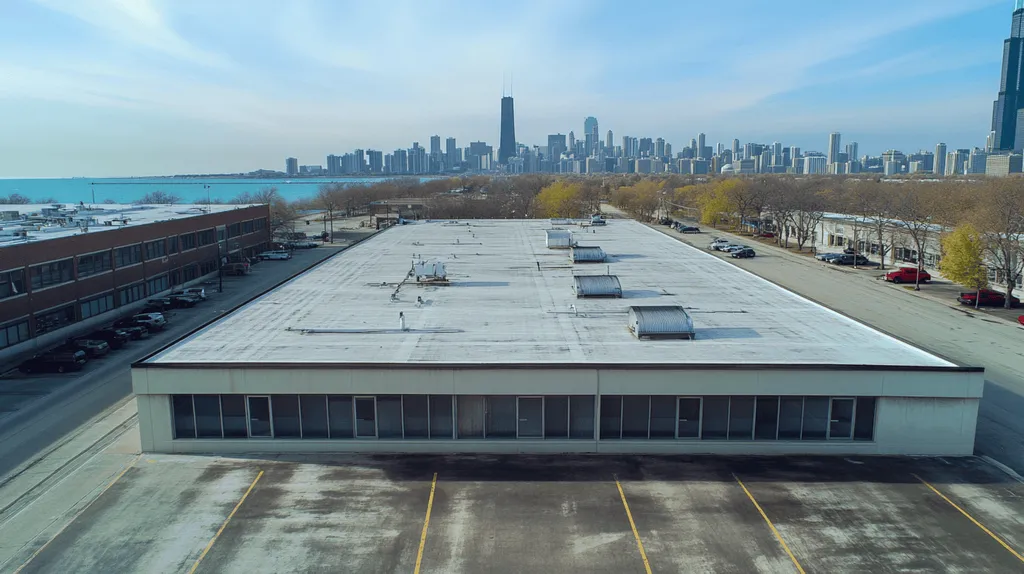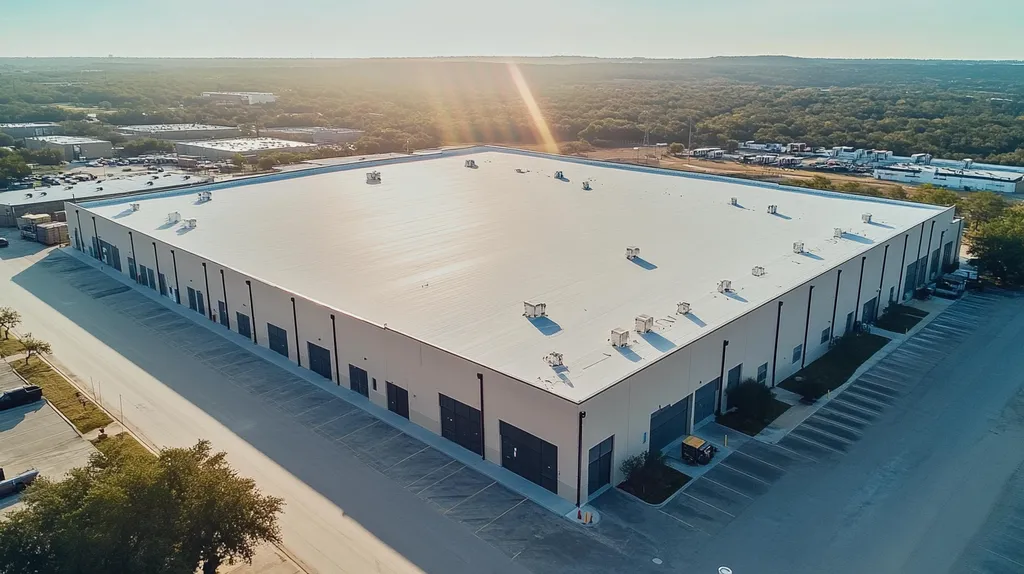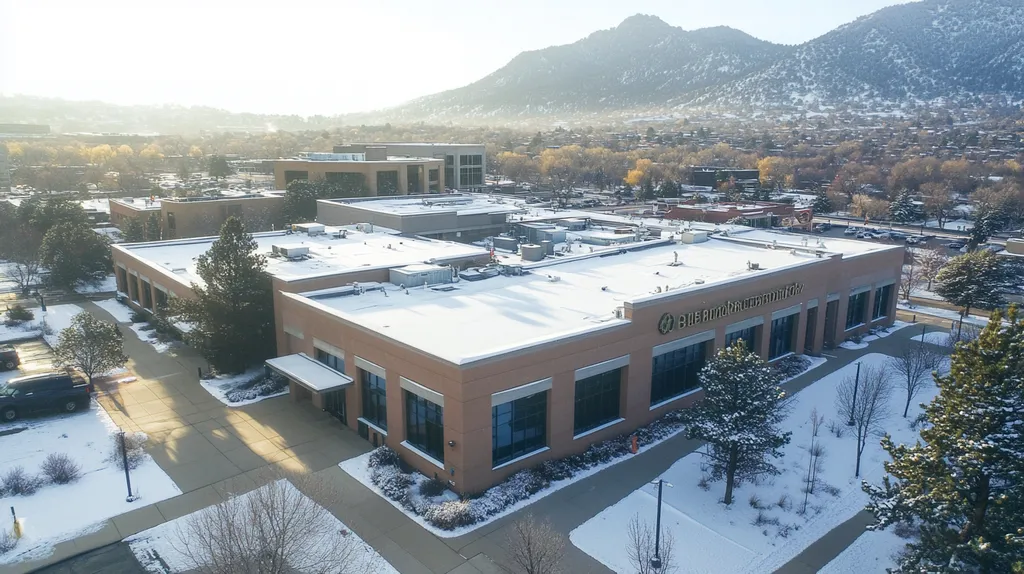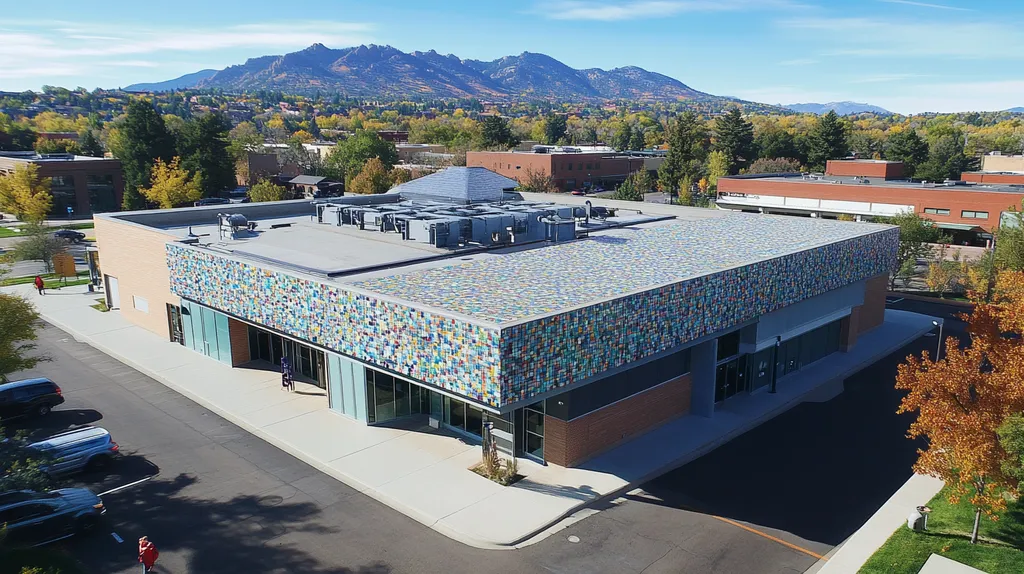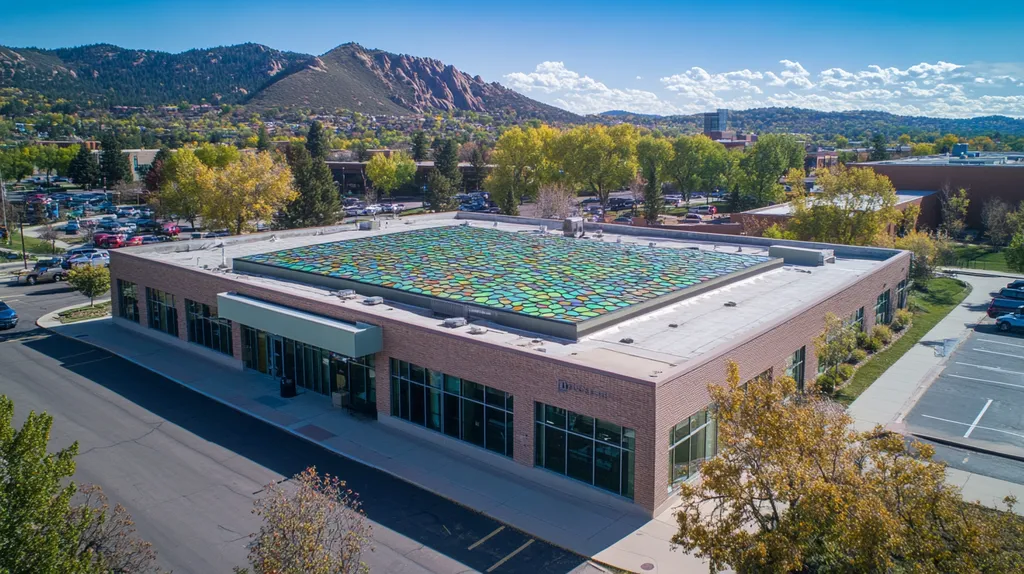Every year, falls from commercial roofs claim over 100 worker lives and cost businesses more than $1 billion in workers’ compensation claims. For facility managers and property owners, implementing proper safety measures isn’t just about regulatory compliance—it’s about preventing catastrophic incidents.
This comprehensive guide examines critical safety protocols, from fundamental OSHA requirements to advanced fall protection technologies. Through systematic analysis of system components, implementation methods, and performance metrics, readers will gain actionable insights for protecting workers on commercial roof projects.
SECTION 1: FUNDAMENTAL CONCEPTS
Safety in commercial roofing demands rigorous attention to established protocols and regulations. Falls remain the leading cause of death in construction, with roofing workers facing a fatality rate 10 times higher than other trades. For facility managers and property owners, understanding fundamental safety concepts isn’t just about compliance—it’s about preventing catastrophic incidents that can devastate lives and businesses.
Overview of OSHA Roofing Safety Regulations
OSHA’s comprehensive framework for roofing safety establishes specific requirements for warning line systems, a critical component of fall protection. These systems must be erected no less than 6 feet from the roof edge and include high-visibility flags at 6-foot intervals.
Warning lines must maintain a height between 34 and 39 inches from the working surface and withstand a minimum force of 16 pounds without tipping. The lines require a minimum tensile strength of 500 pounds to ensure worker safety. (source: OSHA Protecting Roofing Workers Guide)
Non-compliance with these specifications can result in substantial fines, often exceeding $13,000 per serious violation. Beyond financial penalties, inadequate safety measures expose workers to potentially fatal risks.
Regular safety audits ensure ongoing compliance and help identify potential hazards before they lead to accidents. These inspections should document both physical safety measures and worker training compliance.
Understanding Fall Hazards and Risk Factors
Fall hazards in commercial roofing extend beyond obvious edge risks. Skylights, mechanical equipment, and varying roof levels create multiple danger zones that require specific protection measures.
Weather conditions significantly impact fall risks, with wind speeds above 25 mph making work particularly hazardous. Ice, rain, and morning dew can transform normally stable surfaces into serious hazards.
Material handling presents additional fall risks as workers move equipment and supplies. Proper planning for material placement and movement helps minimize these dangers.
Equipment maintenance also plays a crucial role in fall prevention. Regular inspection of safety equipment, including harnesses and anchor points, ensures reliable protection when needed.
Roles and Responsibilities of Competent Persons
A competent person must oversee safety protocols on every commercial roofing project. This individual requires both theoretical knowledge and practical experience to identify and address workplace hazards effectively.
Daily responsibilities include conducting pre-work safety meetings, inspecting fall protection systems, and monitoring changing site conditions. These tasks ensure continuous workplace safety throughout the project.
The competent person holds authority to halt work immediately when unsafe conditions arise. This power extends to removing workers who demonstrate unsafe practices or fail to follow established safety protocols.
Documentation of safety oversight creates a vital record of compliance efforts. This includes maintaining inspection logs, training records, and incident reports that protect both workers and property owners.
SECTION 2: SYSTEM COMPONENTS
Every commercial roofing project requires multiple integrated safety systems working in harmony to protect workers. With falls accounting for over one-third of construction fatalities, proper implementation of these components is critical. Understanding how each element functions within a comprehensive safety strategy allows facility managers to better evaluate their current protocols and identify potential weaknesses.
Guardrail, Safety Net, and Warning Line Systems
Guardrail systems serve as the primary physical barrier between workers and roof edges. These systems must be capable of withstanding at least 200 pounds of force in any direction to prevent workers from falling when contact occurs.
Warning line systems establish clear boundaries around roof work zones. These systems must be erected no less than 6 feet from the roof edge, include high-visibility flags at 6-foot intervals, and maintain a height between 34 and 39 inches from the working surface. (source: OSHA Protecting Roofing Workers Guide)
Safety nets provide supplementary protection in areas where traditional fall arrest systems prove impractical. When properly installed, these systems can prevent serious injury by catching falling workers before ground impact.
Regular inspection of these systems ensures continued effectiveness. Daily checks should verify proper tension, structural integrity, and clear visibility of warning indicators.
Personal Fall Arrest Systems and Harness Components
Personal fall arrest systems combine three essential elements: full-body harnesses, connecting devices, and anchorage points. Each component must work seamlessly with others to arrest falls safely.
Full-body harnesses distribute fall forces across the thighs, pelvis, waist, chest, and shoulders. Proper fit and adjustment are crucial – loose or improperly secured harnesses can cause severe injury during falls.
Connecting devices like lanyards and lifelines link harnesses to anchorage points. Self-retracting lifelines offer greater mobility while maintaining constant protection against falls.
Anchorage points must support at least 5,000 pounds per attached worker. Regular testing and certification of anchor points prevents catastrophic failures during fall events.
Roof Openings Protection: Covers and Skylight Guards
Roof openings present unique hazards requiring specific protection measures. All covers must support twice the weight of workers and equipment that may cross them.
Skylight guards prevent falls through seemingly solid surfaces. Many workers mistakenly believe skylights can support their weight, making proper guarding essential.
Temporary covers require secure fastening and clear marking to prevent accidental removal. Signs warning “HOLE COVER – DO NOT REMOVE” should be prominently displayed.
Regular inspection of covers and guards ensures continued effectiveness. Damage from weather exposure or work activities can compromise protection if left unchecked.
SECTION 3: IMPLEMENTATION METHODS
Proper implementation of safety measures represents the critical bridge between having safety equipment and actually preventing falls on commercial roofs. Research shows that 86% of fall-related fatalities involve improper implementation of existing safety systems. For facility managers, understanding correct implementation methods isn’t just about regulatory compliance—it’s about ensuring every worker returns home safely each day.
Site Assessment and Hazard Identification Procedures
Every commercial roof project requires systematic hazard mapping before work begins. This process identifies both obvious dangers like roof edges and subtle risks like deteriorated decking that could collapse under load.
Weather patterns deserve particular attention during assessment, as wind, precipitation, and temperature changes can create unexpected hazards. Morning dew on membrane roofs or frost on metal panels can transform walkable surfaces into dangerous slip hazards.
Documentation proves essential for thorough site assessment. Creating detailed hazard maps with photos helps communicate danger zones to all workers and validates that proper evaluation occurred.
Regular reassessment throughout the project captures emerging hazards. As work progresses, new openings may appear, materials may create obstacles, and weather conditions can change dramatically.
Installing and Positioning Fall Protection Systems
The warning line system must be erected no less than 6 feet from the roof edge, with ropes, wires, or chains supported by stanchions. All covers protecting roof openings must support at least twice the combined weight of workers, equipment, and materials that may cross them. (source: OSHA Protecting Roofing Workers Guide)
Strategic positioning of anchor points maximizes protection while maintaining worker mobility. Each anchor location must account for potential fall trajectories and swing radius to prevent impacts with lower levels or structures.
Integration between different protection systems requires careful planning. Warning lines must connect seamlessly with guardrails, while ensuring monitored access points don’t create gaps in coverage.
Daily inspection of installed systems verifies continued effectiveness. Checking connection points, tension levels, and structural integrity helps prevent equipment failures during critical moments.
Worker Training and Communication Protocols
Effective safety implementation depends heavily on worker understanding and buy-in. Training must cover both theoretical knowledge and hands-on practice with all protection systems workers will encounter.
Clear communication channels between workers, supervisors, and safety monitors enable rapid response to changing conditions. Establishing specific hand signals helps overcome noise barriers common on roof projects.
Regular safety briefings reinforce proper procedures and address site-specific challenges. These meetings should encourage worker input about potential hazards they’ve observed during their tasks.
Documentation of training completion and safety meeting attendance creates accountability. This record-keeping helps identify knowledge gaps and verify that all workers receive necessary safety instruction.
SECTION 4: MAINTENANCE REQUIREMENTS
Safety equipment maintenance directly impacts worker survival on commercial roofing projects. While 86% of roofing contractors invest in quality safety gear initially, studies show that inadequate maintenance contributes to over 40% of equipment-related accidents. For facility managers and property owners, establishing rigorous maintenance protocols isn’t just about regulatory compliance—it’s about preventing catastrophic equipment failures that can lead to fatalities and devastating liability.
Routine Inspection of Safety Equipment and Systems
Daily visual inspections must cover all safety equipment before use, focusing on stress points, wear patterns, and structural integrity. Workers should check harnesses for frayed webbing, damaged D-rings, and compromised stitching that could fail under load.
Warning line systems require particular attention to stanchion stability and line tension. These systems must be erected no less than 6 feet from the roof edge and include high-visibility flags at 6-foot intervals, with each component capable of resisting 16 pounds of force without tipping. (source: OSHA Protecting Roofing Workers Guide)
Guardrail systems demand weekly stability tests to verify their capacity to withstand required forces. Any components showing corrosion, damage, or excessive movement must be immediately replaced.
Environmental exposure accelerates equipment degradation, making post-storm inspections critical. UV radiation, moisture, and temperature extremes can compromise even properly maintained safety systems.
Repair and Replacement Guidelines for Safety Components
Clear criteria for equipment retirement prevents dangerous judgment calls about borderline gear. Any fall protection equipment that has arrested a fall must be immediately removed from service, regardless of apparent condition.
Synthetic materials in safety equipment have specific service life limits that must be strictly observed. Most manufacturers specify maximum lifespans between 3-5 years, even for unused equipment stored in ideal conditions.
Temporary repairs to safety equipment are never acceptable. When inspection reveals damage or wear, immediate replacement with new, certified equipment is the only safe option.
Maintaining an equipment inventory system helps track service life and inspection history. This systematic approach ensures timely replacement before equipment reaches critical wear thresholds.
Documentation and Compliance Record-Keeping
Detailed inspection logs must record specific findings rather than simple pass/fail checkmarks. Documentation should include photos of wear patterns, damage, or concerns that influence equipment retirement decisions.
Equipment service records must track exposure to harsh conditions that could accelerate degradation. This includes duration of UV exposure, chemical contact, and extreme temperature cycles.
Training records should verify that workers understand inspection protocols and equipment limitations. Regular certification updates ensure knowledge stays current with evolving safety standards.
Digital record-keeping systems enhance accessibility and enable trend analysis across multiple projects. This data helps identify patterns that could indicate systemic maintenance issues requiring attention.
SECTION 5: PERFORMANCE METRICS
Performance metrics provide the critical foundation for evaluating and improving roofing safety programs. With falls accounting for 36% of construction fatalities annually, measuring the effectiveness of safety protocols isn’t just about compliance—it’s about preventing devastating accidents. Comprehensive metrics enable facility managers to identify weaknesses in their safety systems before those gaps result in injuries or deaths.
Measuring Fall Protection System Effectiveness
Quantifiable measurements of fall protection systems must go beyond simple equipment checks. Regular load testing of anchor points, guardrails, and connection devices provides concrete data about system reliability under stress.
Environmental monitoring plays a crucial role in system effectiveness. Tracking weather conditions, UV exposure hours, and chemical exposure helps predict when protective equipment may begin to degrade.
Digital monitoring systems can now provide real-time data on warning line tension and guardrail stability. These advanced metrics allow immediate response to safety system failures before they endanger workers.
Regular analysis of worker movement patterns helps optimize protection system placement. Heat mapping of high-traffic areas ensures safety measures align with actual work patterns rather than theoretical plans.
Tracking Incident Rates and Near-Miss Reporting
Comprehensive incident tracking must capture both actual accidents and near-miss events. Each near-miss represents a potential fatality avoided, making this data crucial for preventing future accidents.
Digital reporting systems streamline data collection and analysis. Mobile apps enable workers to document safety concerns immediately, while automated tracking tools identify concerning patterns.
Monthly trend analysis helps identify seasonal risk factors. Understanding how weather patterns and changing daylight hours affect incident rates enables proactive safety adjustments.
Root cause analysis of every incident reveals systemic issues. Detailed investigation protocols ensure that surface-level causes don’t mask deeper safety program deficiencies.
Evaluating Worker Safety Training Outcomes
Practical skills assessments provide concrete data on training effectiveness. Regular testing of worker knowledge through both written and hands-on evaluations ensures safety protocols are truly understood.
Tracking individual worker safety records over time reveals training gaps. Performance metrics should identify both high-performing workers who can mentor others and those requiring additional support.
Video analysis of work practices helps verify training application. Regular review of recorded safety behaviors ensures classroom learning translates to actual roof work.
Annual certification rates and training completion statistics guide program improvements. These metrics help facility managers allocate resources effectively for maximum safety impact.
SECTION 6: OPTIMIZATION STRATEGIES
Commercial roofing safety demands constant evolution as technology and best practices advance. Research shows that facilities implementing optimized safety strategies see up to 73% fewer workplace incidents compared to those relying on basic compliance measures. For property owners and facility managers, optimization isn’t just about preventing accidents—it’s about creating a comprehensive system that protects workers while maximizing operational efficiency.
Integrating Advanced Fall Protection Technologies
Smart harness systems with built-in load indicators and automatic fall detection now provide real-time monitoring of worker safety. These systems instantly alert supervisors when equipment experiences stress beyond acceptable parameters.
Drone technology enables thorough pre-work hazard mapping while keeping inspection personnel safely away from edges. Regular aerial surveys identify developing issues before they create dangerous conditions.
Digital monitoring systems track environmental conditions that affect worker safety. Temperature sensors, wind meters, and moisture detectors feed data to centralized dashboards for immediate risk assessment.
Integration of these technologies requires comprehensive training programs. Workers must understand both operation and limitations of advanced safety equipment to maximize its protective potential.
Continuous Improvement through Safety Audits
Safety audits must evolve beyond simple compliance checklists to evaluate system effectiveness holistically. This includes analyzing near-miss data, equipment performance metrics, and worker feedback patterns.
Implementing digital audit tools enables real-time data collection and analysis. Mobile platforms allow immediate documentation of safety concerns with photo evidence and location tracking.
Third-party safety consultants provide valuable external perspectives on potential system weaknesses. Their specialized expertise helps identify subtle issues that internal auditors might overlook.
Creating action plans from audit findings ensures concrete improvements. Each identified issue requires clear ownership, specific corrective steps, and definitive completion timelines.
Enhancing Safety Culture and Worker Engagement
Building a strong safety culture requires active participation at every organizational level. Leadership must demonstrate visible commitment through regular safety walks and direct involvement in safety initiatives.
Recognition programs that reward proactive safety behaviors reinforce positive practices. Celebrating workers who identify and report potential hazards encourages everyone to take ownership of workplace safety.
Regular safety meetings should facilitate open dialogue rather than one-way communication. Creating forums where workers can voice concerns without fear of reprisal builds trust and encourages reporting of safety issues.
Mentorship programs pair experienced workers with newer team members to share practical safety knowledge. This peer-to-peer learning approach often proves more effective than formal training alone.
The Bottom Line
With roofing falls claiming over 100 lives annually and costing businesses more than $1 billion, the stakes for proper safety implementation couldn’t be higher.
Modern fall protection combines proven physical barriers like guardrails and warning lines with advanced technologies including smart harnesses and drone monitoring systems.
Success requires more than just equipment – it demands systematic assessment, rigorous maintenance protocols, and comprehensive worker training programs.
By implementing the integrated safety approach outlined in this guide, facility managers can dramatically reduce workplace incidents while fostering a culture where safety becomes intrinsic to every roofing operation.
The cost of inadequate safety measures isn’t measured in dollars – it’s measured in lives.
FREQUENTLY ASKED QUESTIONS
Q. What are essential safety concepts for commercial roofing?
A. Understanding safety concepts involves compliance with protocols that prevent falls. It’s crucial to recognize falls as leading causes of fatalities in roofing jobs, and implementing proper safety measures can dramatically reduce risks.
Q. What systems protect workers on commercial roofs?
A. Integrated safety systems like guardrails, warning lines, and safety nets are essential. They work together to establish safe boundaries and prevent falls by creating physical barriers around work zones.
Q. How can implementation methods enhance safety for commercial roof projects?
A. Effective implementation includes thorough site assessments and proper positioning of protection systems. Regular training and clear communication ensure workers understand how to use safety measures effectively during roofing projects.
Q. What maintenance is required for commercial roofing safety equipment?
A. Regular inspections are key to maintaining safety equipment. Daily visual checks and weekly stability tests help identify wear and damage, ensuring everything functions correctly before workers rely on it.
Q. How are performance metrics used to improve roofing safety?
A. Metrics track incident rates, near-miss occurrences, and training outcomes. Analyzing this data helps identify weaknesses in safety protocols and ensures that measures are effective, ultimately preventing workplace accidents.
Q. What optimization strategies enhance safety on industrial roofs?
A. Employing advanced technologies like smart harnesses and drones can improve safety. Continuous improvement through safety audits and fostering a strong safety culture further enhances protection on roof projects.
Q. What other safety measures should be considered for commercial roofing?
A. Workers should have access to first aid kits and emergency response plans. Regular training on recognizing hazards can empower teams to maintain safety and prevent accidents during roofing operations.

